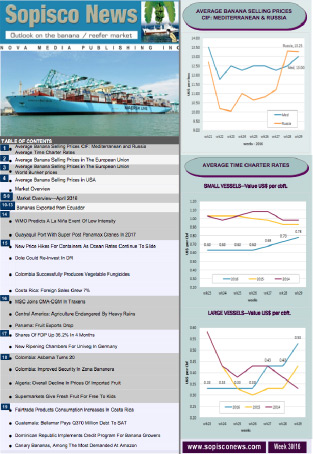Colombia Secures Its Banana Crops Due to the La Niña Phenomenon
2024-06-07

The Colombian Government, through the Fund for the Financing of the Agricultural Sector (Finagro), has made available $66,000 million to subsidize insurance policies that help mitigate the adverse impacts on productive activities. Currently, through Finagro, up to 95% of the cost of an agricultural insurance policy is subsidized, providing farmers with support in case of crop losses.
Recent data shows the effectiveness of the insurance policies. In just two months, Finagro has committed 55% of the $146,500 million assigned by the Ministry of Agriculture this year to subsidize the purchase of policies through the Agricultural Insurance Incentive (ISA). The entity offers a premium subsidy of up to 95% for low-income small producers, up to 90% for a small producer, and up to 40% for medium producers.
The impact of the insurance policies is tangible. Based on portfolio information, during 2023, through Finagro, $114,600 million was granted in premium subsidy, which directly supported 76,700 producers. It's worth noting that 99% of these producers were small producers, highlighting the targeted nature of the support.
In addition, 156,000 hectares were insured. The departments most benefited from these resources were Santander (13%), Caldas (11%), and Antioquia (10%). Thanks to the excellent reception of the Agricultural Insurance Incentive (ISA) and the subsidies granted by the National Government, between 2023 and April 2004, the insurance industry has paid more than $101,000 million in compensation to agricultural producers affected by adverse climatic events. Crops that can access this insurance include bananas, plantain, and avocados. According to Alexandra Restrepo, president of Finagro, thanks to agricultural insurance and the subsidy granted by the National Government, those affected by natural events can meet their financial obligations and recover part of their investment. Finagro recognises up to 95% of the insurance cost, so an agricultural producer would only have to pay 5%.









